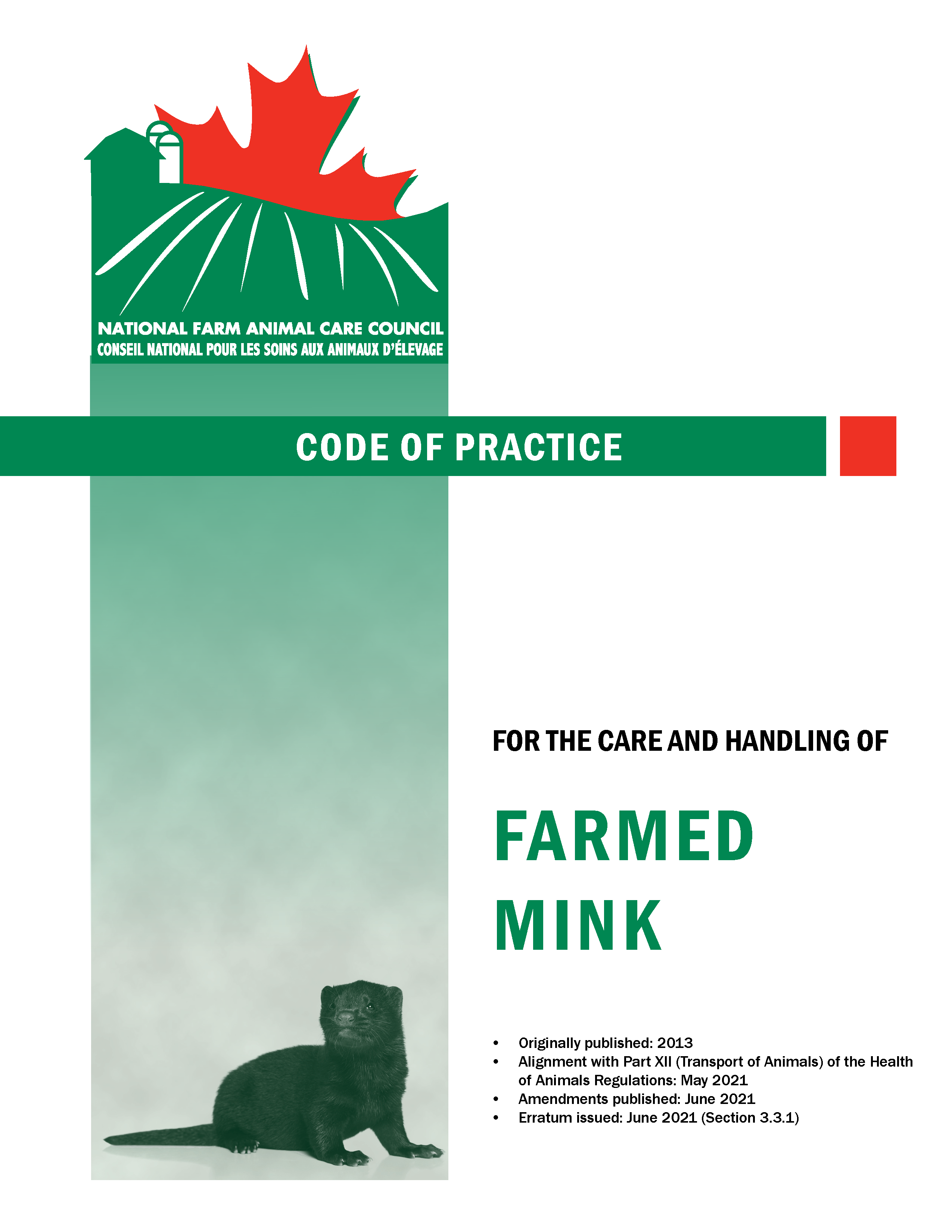Codes Of Practice
Developed through NFACC
- Bison
- Dairy Cattle
- Farmed Fox
- Farmed Mink
- Farmed Salmonids
- Goats
- Pullets and Laying Hens
- Rabbits
- Veal Cattle
Under Revision
Archived Recommended Codes of Practice
Code Development Process
Farmed Mink
The Code of Practice for the Care and Handling of Farmed Mink was originally released in 2013. Amendments to the mink Code were initiated in 2020 and completed in 2021. Amendments were made to the following sections: 1.2.2 Pens, 1.2.3 Nest Boxes, 1.2.4 Bedding, 3.1 Nutrition, 3.1.1 Breeding Mink, 5.1 Animal Handling, and the Euthanasia chapter (now called Euthanasia and Harvest).
Please note that content in the transportation section of this Code, along with additional transportation-related content (e.g., glossary terms) that had referenced or reflected the outdated version of Part XII (Transport of Animals) in the Health of Animal Regulations (HAR), or the now archived Compromised Animals Policy, has been updated to align with the amended regulations, which took effect on February 20, 2020. Hard copies of the Codes that were printed prior to this alignment will not include these updates. For clarity, Codes that have been updated will include a statement on the front cover that reads “Alignment with Part XII (Transport of Animals) of the Health of Animals Regulations: 2021”.
This update process was strictly aimed at revising existing text that no longer aligned with the amended HAR. Every effort was made to respect the original priorities and decisions of the Code Development Committee (e.g., text from the HAR was not added if it was not covered in the original Code). In case of a discrepancy between the hard copy and online version of a Code, the online version shall take precedence.
There are various ways to view the Code: 
- PDF version (590 KB)
- HTML version (or select from the Table of Contents below)
There are a limited number of hard copies of this Code. NFACC encourages use of the electronic version and does not store hard copies. If hard copies are required, please contact the Canada Mink Breeders Association.
Other resources:
- Amending the Code of Practice for the Care and Handling of Farmed Mink: What We Heard and How We Addressed It – August 2021
- Scientific Committee report - Review of scientific research on priority issues - May 2012
- NFACC Code development process
- Animal Welfare Research Needs
Table of Contents
| Appendices | ||
| Appendix A | - Body Condition Scoring for Mink | |
| Appendix B | - Feed Testing Laboratory Contacts | |
| Appendix C | - Provincial Veterinary Diagnostic Laboratories | |
| Appendix D | - Participants | |
| Appendix E | - Summary of Code Requirements | |
